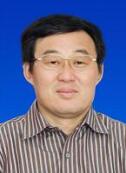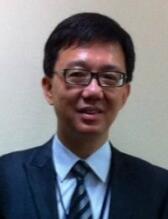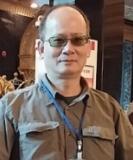
The 4th International Conference on
Water Resource and Environment (WRE 2018)
Water Resource and Environment (WRE 2018)

 |
Prof. Tianfu Xu Professor and Dean, College of Environment and Resources, Jilin University Tianfu Xu is currently a chair professor at Jilin University of China. He has been working at Lawrence Berkeley National Laboratory (LBNL) of USA for 16 years, in which he joined in 1996, initially as post-doctoral fellow, then become a scientist, and staff scientist. He received a bachelor’s degree in 1984 from Jilin University, an M.S. degree in 1993 from Delft University of Technology of The Netherlands, and a Ph.D. in 1996 from University of La Coruña, Spain. For the last 25 years, Tianfu has been working on developing new approaches to modeling multiphase non-isothermal fluid flow and chemical transport in unsaturated and saturated porous media and fractured rock systems. He is the chief developer of LBNL’s multi-phase non-isothermal reactive flow and chemical transport simulator TOUGHREACT. The program is widely used internationally for geothermal energy development, CO2 geological sequestration, nuclear waste disposal, environmental remediation, and increasingly for petroleum applications. Tianfu has authored and co-authored about 70 peer-reviewed journal papers. His papers have been cited by other researchers more than 4000 times (SCI citation). |
| Speech Title: Subsurface Reactive Transport Modeling: Applications to Energy and Environment Problems Abstract: The assessment of waste disposals, the study of groundwater pollutions, and the understanding of natural groundwater quality patterns require reactive transport modeling (RTM) to consider both the transport of heat and dissolved species as well as their complex interactions with the solid (or other) phases of the engineering barriers and geological formation. The RTM is a necessary tool for analyzing, evaluating, and predicting subsurface coupled processes of physics, chemistry and microbiology in the shallow earth system. In the past several decades, a number of methods and techniques have been developed to address this complex issue. This talk will briefly review the theory and method of the RTM. Then, couples of examples regarding the groundwater quality occurrence, CO2 geological storage, geothermal energy development, and submarine biogeochemical processes will be presented. | |
 |
Prof. Slobodan P. Simonovic Fellow, Canadian Academy of Engineering; Professor of Department of Civil and Environmental Engineering/Director of Engineering Works, Institute for Catastrophic Loss Reduction, the University of Western Ontario Slobodan P. Simonovic is globally recognized for his unique interdisciplinary research in Systems Analysis and the development of deterministic and stochastic simulation, optimization, multi criteria analysis, and other decision-making methodologies for addressing challenging system of systems problems lying at the confluence of society, technology and the environment, with applications in water resources management, hydrology, energy, climate change and public infrastructure, from a sustainable development perspective. His main contributions include modelling risk and resilience of complex systems. Professor Simonovic has influenced academia, industry and government via university teaching, publication of leading-edge research, mentoring of young people, delivering stimulating research seminars at institutions around the world, carrying out joint research projects, and consulting work. He has received awards for excellence in teaching, research and outreach. Dr. Simonovic has published over 500 professional publications (216 in peer reviewed Journals) and three major textbooks. He has been inducted to the Canadian Academy of Engineering in June of 2013. |
| Speech Title: A Systems Approach to Modelling Water-Energy-Food Nexus: ANEMI Model Abstract:ANEMI simulates system dynamics to offer information on Earth’s dynamic processes and the behaviours that instigate change. The main thrust of ANEMI is to explicitly integrate various sectors (natural, physical and socioeconomic) into a single model, providing effective consideration of the high level feedback relationships between climate and social adaptation. At lower levels this relationship ends in thousands of feedbacks between various model sectors and variables. The model includes nine sectors and approximately 600 state variables. An important characteristic of ANEMI is the consideration of the availability, demand and quality of water as a main connector between natural and socioeconomic domains. The model is able to differentiate between processes that occur on the global and regional scale and uses an original decomposition scheme to effectively provide the exchange of information between the two dimensions. | |
 |
Prof. Jimmy (C.M.) Kao Professor, Institute of Environmental Engineering at National Sun Yat-Sen University Prof. Jimmy (C.M.) Kao is a chair professor in the Institute of Environmental Engineering at National Sun Yat-Sen University, Taiwan. Prof. Kao was the former Coordinator of Environmental Engineering Program at Ministry of Science and Technology, former President of The Chinese Institute of Environmental Engineering, and former President of The Taiwan Association of Soil and Groundwater Environmental Protection. He received his MS and Ph.D. degrees in Environmental Engineering from North Carolina State University in 1989 and 1993, respectively. Prof. Kao has more than 27 years of experiences as a researcher and environmental engineer in constructed wetland design and operation, watershed management, and soil and groundwater remediation. He is a fellow member of several international associations including IWA, ASCE, EASA, AAAS, and EWRI. He is also a registered professional engineer in USA. |
Speech Title: Using Constructed Wetland and Aerated Gravel-packed Contact Bed System for Polluted River Water Purification Abstract: The Ju-Liao stream is one of the most contaminated streams in Kaohsiung City, Taiwan. The Ju-Liao Stream contains high concentrations of organics and nutrients due to the discharges of domestic, industrial, and agricultural wastewaters from the upper catchments into the stream. A constructed wetland (CW) system was built in 2010 for polluted stream water purification and ecosystem improvement. To minimize the pollutant loading to the CW, an aerated gravel-packed contact bed (CB) system was built in 2012 and part of the stream water was treated by the CB before discharging to the CW. The influent rates of the CW and CB were approximately 900 and 5,568 m3/day, respectively. This studied CW and CB scheme has become a successful multi-function system, which is used for stream water purification, environmental education, and ecosystem restoration. | |
 |
Prof. Chih-Huang Weng Professor, Department of Civil Engineering, I-Shou University Professor, Chih-Huang Weng received his Ph.D. degree and Master degree in Environmental Engineering from The University of Delaware, USA. Currently, he is a faculty member in the Department of Civil and Ecological Engineering at I-Shou University, Kaohsiung, Taiwan. He has published about 75 technical papers in SCI journal and 26 of them H-index. He is also serving as an editorial board member and guest editor of several academic journals. His research interests focus on using advanced oxidation processes, adsorption, and electrokinetic technologies for wastewater treatment and groundwater remediation. |
Speech Title: Zero-Valent Iron Aggregates as an Eco-friendly Activator in Persulfate Oxidation Process for Degradation of Azo Dyes Abstract: Effluents from dyeing and textile industries are usually heavily colored with dyeing agents. Synthetic azo dyes are the largest category of industrial colorants, which are mostly non-biodegradable and persistent due to their synthetic origin and complex molecular structure. Conventional biological processes are usually inadequate for the treatment of these chemicals under the increasingly stringent effluent standards. Advanced oxidation processes have been shown to be promising in removing color from dye-laden wastewaters. Fe0 aggregates have long been used commercially as a reducing agent, particularly in the remediation of groundwater. The price of commercialized Fe0 aggregates is much lower than the nano-sized Fe0 (500 USD/ton versus 80 USD/kg). Fe0 aggregates are also easier to handle and apply than the micro-sized Fe0 powders since the aggregates are relatively stable, easily separable, and reusable. Therefore, a closer examination on the oxidation behaviors of Fe0 aggregates is of great interest. This presentation summarizes the indirection activation of persulfate (PS) via zero-valent iron (Fe0) aggregates for degradation of azo dyes. The Fe0 aggregates function as catalysts in the breakdown of synthetic dyes through the production of active radicals (SO4–•) from persulfate reactions. Performances of the activator are compared with that of traditional activators such as ferrous iron. The use of ultrasound and heat as enhancement tools to improve the oxidative power of Fe0/PS is discussed. Since the Fe0 aggregates are commercially available, they have great potentials for application in the treatment of dye-laden textile wastewaters. The presentation can also bring about a new perspective on the use of Fe0 aggregates in wastewater treatment. | |